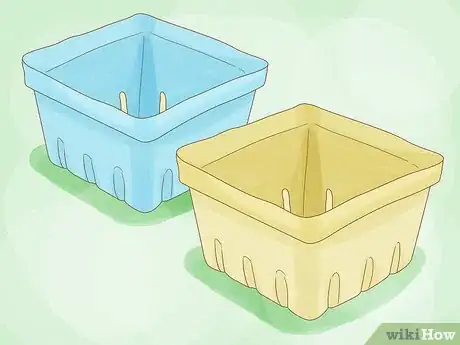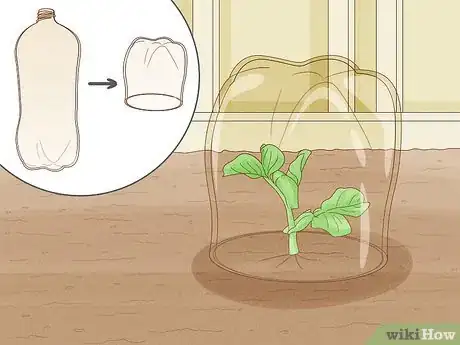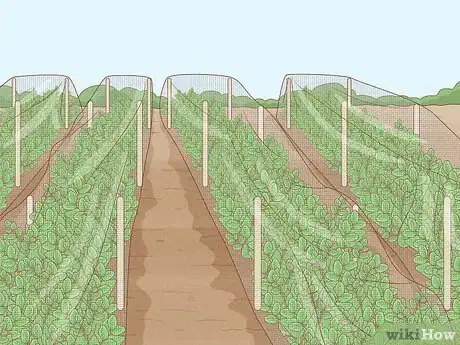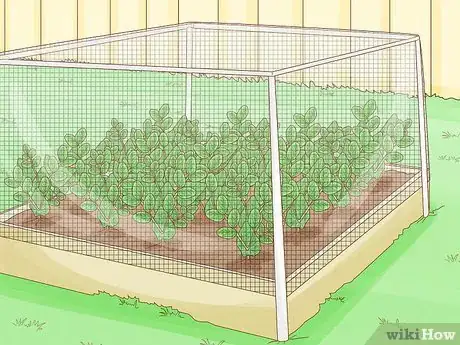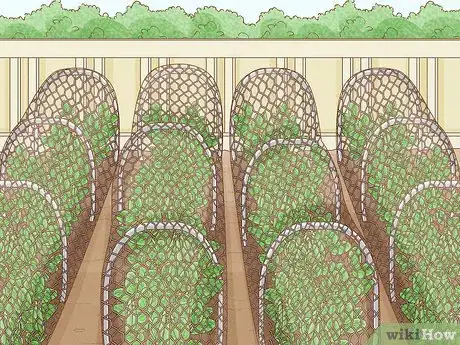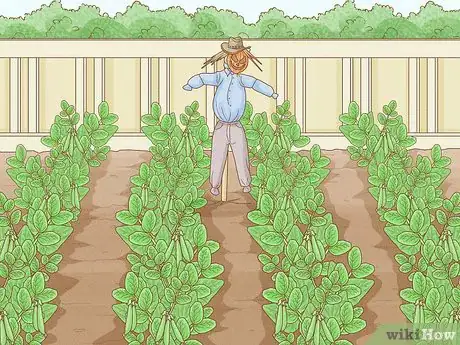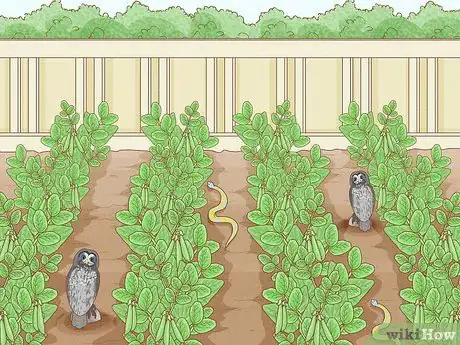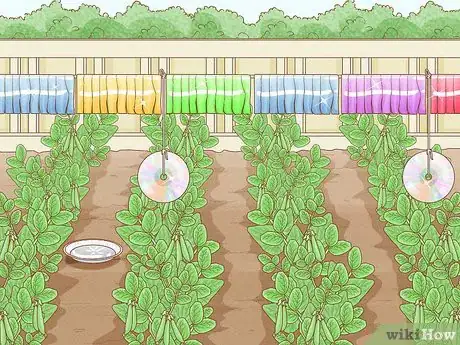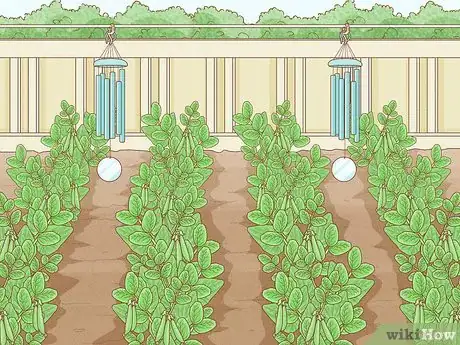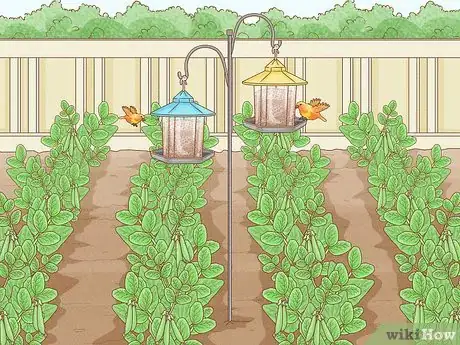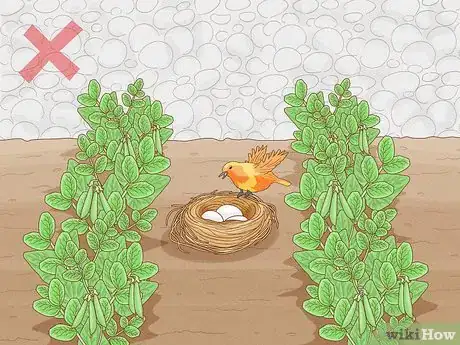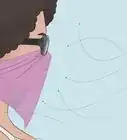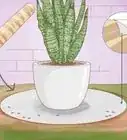This article was co-authored by Elmer Bensinger and by wikiHow staff writer, Jessica Gibson. Elmer Bensinger is a Pest Control Specialist with Eden Advanced Pest Technologies in Spokane, Washington. With over 20 years of experience, Elmer specializes in integrated pest management and products such as insecticides and rodenticides. He studied business at South Puget Sound Community College.
There are 11 references cited in this article, which can be found at the bottom of the page.
This article has been viewed 8,429 times.
Few things are as frustrating as getting your garden started, only to find birds eating your hard work! To give your pea plants the best chance to mature, there are lots of things you can do to protect them. Protect them in the early stages, when they're most vulnerable to birds.[1] X Research source Remember, you don't want to totally get rid of birds in your garden since they do eat pests. You just need to try a few tricks to keep them away from your peas.
Steps
Berry basket
-
This is a great option if you don't want to buy netting or gardening gear. You probably have some plastic berry baskets lying around. Just turn them upside-down and set them over your pea seedlings. This prevents the birds from being able to reach the plant while it's putting on its early growth.[2] X Research source
- You can also use berry clamshells by opening them and placing them over the pea plant so they form a tent shape.
Soda bottle or plastic cup
-
Cut the bottom from a bottle and push it into the soil around a pea plant. If you don't have berry baskets, wash out an empty soda bottle or plastic drink cup. Then, cut 2 inches (5.1 cm) from the bottom to make a flat opening and push the flat base into the soil around your pea plant. Birds won't be able to get down to the peas as the plant starts to grow.[3] X Research source
- Unscrew the cap from the soda bottle so it doesn't trap moisture.
- Plan on using 1 bottle for each pea plant you're starting.
Draped netting
-
Cover your peas with medium-weight netting so the birds can't get to them. Lay medium-weight white spun fabric, garden fleece, or netting right on top of your pea plants. Then, place rocks, bricks, or soil on the edges of the fabric to prevent it from blowing off. The birds won't be able to eat the peas and air can still circulate around your plants.[4] X Trustworthy Source Penn State Extension Educational organization dedicated to delivering science-based information to people, businesses, and communities Go to source
- The fabric or netting also keeps your plants a little warm, which can help them put on growth.
- You can leave the netting on your peas until the plants are about 3 inches (7.6 cm) high. Then, remove them so the plants don't start growing into the net.
Framed netting
-
Protect mature pea plants with frames covered by netting. Although you can drape netting over full-grown pea plants, you might find that it's easier to monitor the plants and harvest if you build a simple wire or plastic frame over them. Then, attach medium-weight netting over the frame so its not directly touching the pea plants.[5] X Research source
- You can buy metal or plastic gardening hoops or frames from most garden centers or online.
Chicken wire
-
Bend chicken wire to make a little tunnel over mature plants. Once your pea starts have put on growth, give them space to grow, but protect them from the birds. Push chicken wire into the soil on 1 side of the plants. Then, fold it over the plants and give them room to grow before you push the wire into the soil on their opposite side.[6] X Research source
- Keep the wire high enough above the plants that the birds can't sit on the wire and peck down through it.
Scarecrow
-
There's a reason you see scarecrows in gardens—they work! Fill a long-sleeved shirt and pants with straw or whatever stuffing you have available. Then, secure it to a wooden frame and stick your scarecrow in the garden next to the peas.[7] X Research source
- If you want, get creative with styling it—you can stick the legs in boots, pop on a bucket for a head, and place a hat on top, for instance.
Fake predators
-
Set out fake owls and snakes around the peas. Don't have room for a scarecrow? No worries! You can place fake owls, scary masks, or owl silhouettes along a fence near your peas. Since these are bird predators, most birds will avoid your space if they see them.[8] X Research source
- You can pick up fake snakes at dollar stores if you don't want to spend a lot of money.
Shiny objects
-
Hang CDs, metallic streamers, or aluminum pie plates in your garden. As the sun catches on them, they'll reflect light, which frightens the birds away. You can stick gardening rods into your garden bed near the peas and hang the shiny items from them or hang them from a nearby tree.[9] X Research source
- It's even better if the objects knock against something like a fence to make a noise that will startle the birds.
Wind chimes
-
Hang wind chimes or something noisy that will startle away the birds. Try to hang them as close to the peas as you can so the birds will avoid your plants. If you don't have wind chimes, you could hang anything that will make noise as they hit against each other.[10] X Research source
- For example, hang pieces of bamboo, keys, or empty cans.
Bird feeders
-
Set out bird feeders so the birds leave your garden alone. The birds aren't trying to destroy your peas—they're just hungry! Place a few bird feeders in your yard to give them an alternative to eat. Just put them out of your garden so the birds don't come into the gardening space to eat.[11] X Research source
- Don't forget to check your bird feeders every week and refill them when they're looking low.
Nest discouragement
-
Remove nesting materials so birds aren't drawn to your garden. If you have brush or pruning piles near your pea plants, birds might be attracted to the garden since they can nest and eat! Get rid of unwanted brush piles or any other materials like irrigation pipes or boxes that birds could use to roost in.[12] X Research source
You Might Also Like
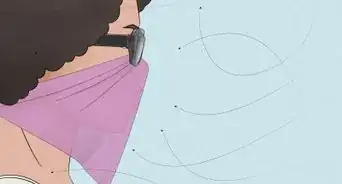 How to Drive Away Gnats for Good: Easy DIY Methods
How to Drive Away Gnats for Good: Easy DIY Methods
 How to Get Rid of Ant Nests in Potted Plants
How to Get Rid of Ant Nests in Potted Plants
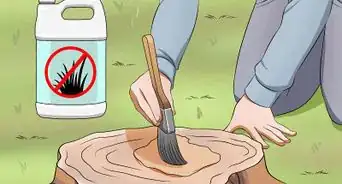
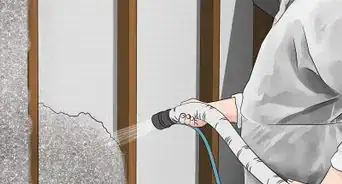


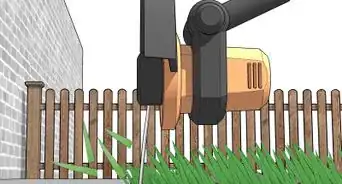



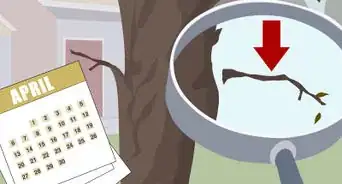
References
- ↑ http://ashfordallotmentsorguk.weebly.com/bird-damage.html
- ↑ https://youtu.be/WnHt88ZxlBQ?t=276
- ↑ https://www.hortmag.com/weekly-tips/protect-vegetable-seedlings-from-birds
- ↑ https://extension.psu.edu/programs/master-gardener/counties/chester/how-to-gardening-brochures/garden-cover-ups-1
- ↑ http://ashfordallotmentsorguk.weebly.com/bird-damage.html
- ↑ http://ashfordallotmentsorguk.weebly.com/success-with-peas.html
- ↑ https://www.hortmag.com/weekly-tips/protect-vegetable-seedlings-from-birds
- ↑ https://www.gardeningchannel.com/birds-out-of-vegetable-garden/
- ↑ https://youtu.be/8wSyN3lNyv4?t=147
- ↑ https://www.gardeningchannel.com/birds-out-of-vegetable-garden/
- ↑ https://youtu.be/8wSyN3lNyv4?t=31
- ↑ http://ipm.ucanr.edu/PMG/r105600111.html
- ↑ https://worldbirds.com/how-to-keep-birds-away/
- ↑ https://worldbirds.com/how-to-keep-birds-away/
- ↑ https://gardening.which.co.uk/hc/en-gb/articles/213972885-Protecting-your-garden-from-birds
About This Article

